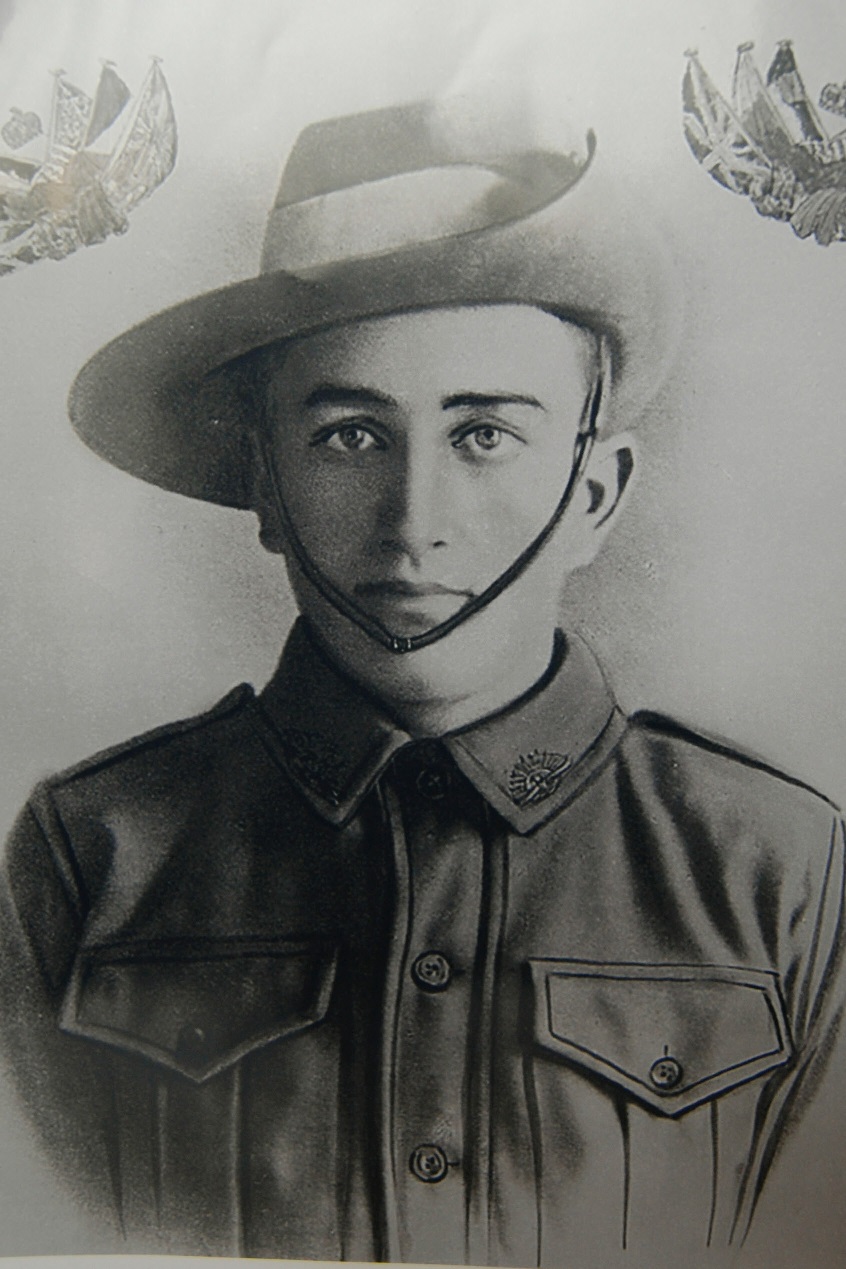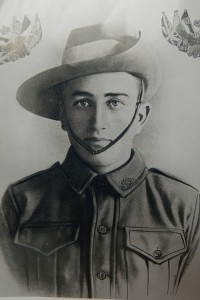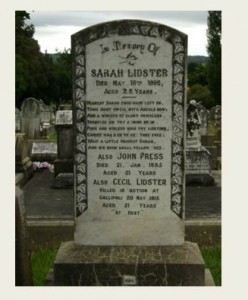Cecil Lidster was my father’s cousin. My maternal grandmother was Elizabeth Agnes Lidster. Cecil was the first child of her eldest brother, Joseph Henry Lidster, and his wife, Sarah Press of Orange.
Cecil was born on 7 June 1893. The birth was registered at Wellington, NSW.
Sarah had another son, Joseph Daniel, in May 1895 but tragically both she and the baby died within weeks of the birth. Joseph Lidster was working at Newrea, near Wellington, at the time of Sarah’s death.
Prior to 1901, Cecil’s father went to Queensland leaving seven-year-old Cecil in the care of his own and his late wife’s families – the Lidsters and the Press’.
On 22 August 1914, Cecil, a 21-year-old farmer, enlisted in the Australian Imperial Force. He was recorded as being 6 feet tall and weighing 12 stone, with a fair complexion, brown eyes and brown hair. His next of kin was stated as J Lidster, Cloncurry, Queensland, Australia. His regimental number was 413 and his unit was the 1st Australian Light Horse Regiment.
He left Sydney in October 1914 on the Star of Victoria, arriving in Egypt in December 1914. According to the Australian War Memorial website “the light horse were initially considered unsuitable for the Gallipoli operation, but were soon deployed without their horses to reinforce the infantry… landed on 12 May 1915 and attached to the NZ and Australian Division.” Eight days later, Cecil was killed in action. He is buried at Shrapnel Valley Cemetery.
I know little of Cecil’s life before he enlisted. He was apparently educated at St Joseph’s School in Orange. His name appears as a young guest at a Lidster family wedding in 1900 at Cheeseman’s Creek. Although Cecil was my father’s first cousin, Dad being born at Penrith in 1904 – the youngest of thirteen children – I am not aware if my father had much contact with him. His older siblings, however, were born at the Post Office and Hotel at Cheeseman’s Creek (on the Orange to Cudal road) and would have known Cecil.
Once news of Cecil’s death reached Orange and district, some of the residents of the district around German’s Hill, where Cecil had worked and was well known, held a public meeting and lodged a request with the Postal Department to rename the area either Lidster or Anzac, with their preference being for the former “in memory of a fine young man… one of the first to volunteer for the war”. The request was granted and so the locality on that section of the Orange-Cargo Road is now known as Lidster.
* This article was written by Maria (Hughes) Griffiths. It was first published in Eagle Eye: Cowra Family History Group Journal, Vol. 32, No. 2, November 2014, pp. 21-22.
Cecil is commemorated on the Patrician Brothers’ Roll of Honour, St Joseph’s Church Orange Honour Roll, Nashdale Public School Honour Roll and on the World War I Roll of Honour on the southern face of the Orange Cenotaph.
In early 1916 German’s Hill was renamed Lidster in honour of Cecil.
In 1923 the Anzac Memorial Avenue of trees was planted along Bathurst Road to commemorate fallen WWI soldiers. A tree was planted in honour of “Pte CJR Lidster”; it was donated by Fred Barrett. Very few of the trees are still standing today.



